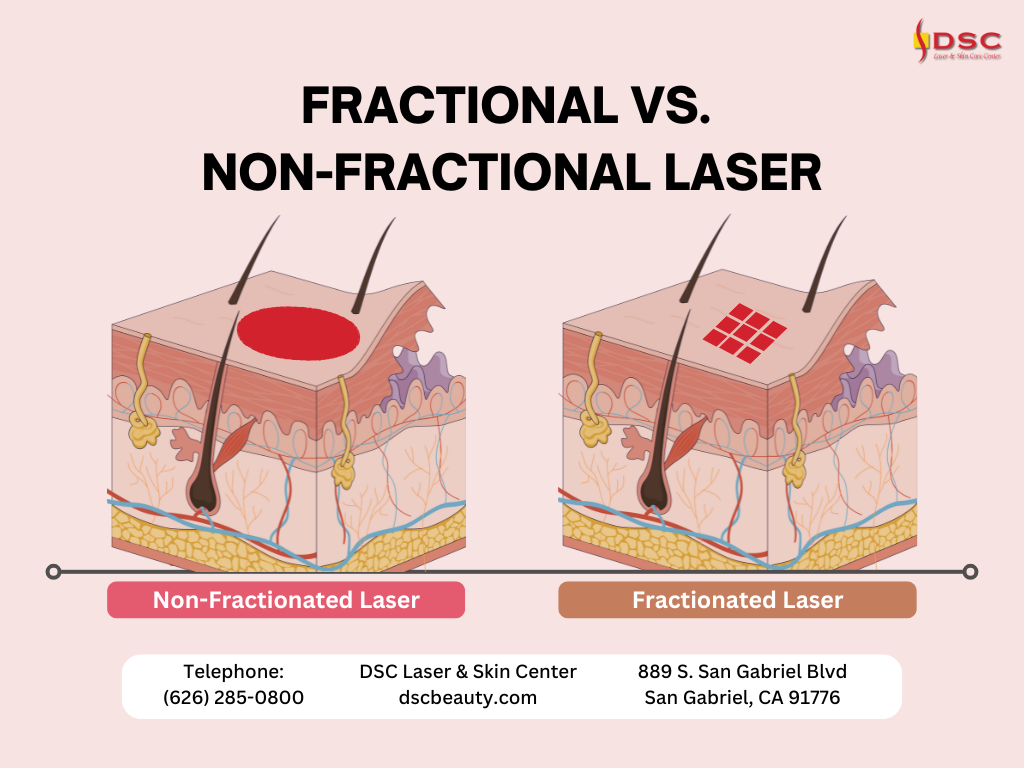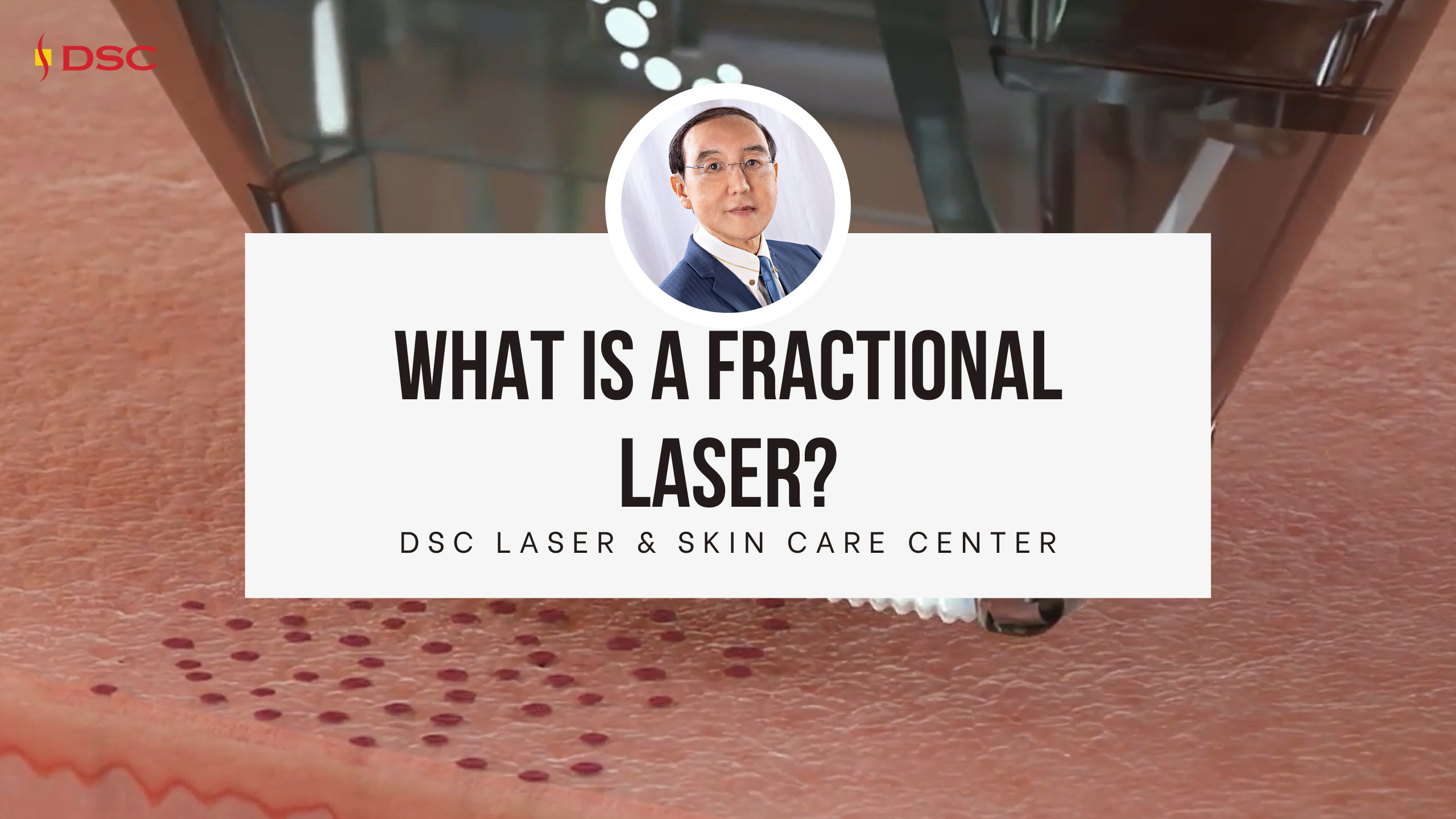What is a fractional laser? How is it different than a non-fractional laser? What are the benefits of a fractionated laser vs a non-fractionated laser?
A fractional laser refers to the amount of coverage per shot or pulse by a laser on the skin. Traditionally, each pulse treats all of the skin that the laser energy is centered over, giving 100% coverage. A fractional laser treats only a partial amount of the skin per pulse, sparing surrounding tissue. See graphic below for a visual representation of a fractional vs. non-fractional laser.

Only a fraction of the skin is treated, hence the term “fractional” laser. One of the pioneers of this feature is the aptly named Fraxel laser. “Fraxel” is the trademarked name of a fractional laser with a 1550nm wavelength; however, fractional lasers exist in many different wavelengths. 1064nm (usually for pico lasers, rarely for nano lasers), 1927nm thulium lasers, 1440nm lasers, 2940nm erbium lasers, and even 10600nm CO2 lasers can come in fractional and non-fractional variations.
What are the benefits of a fractional laser?
Because a fractional laser only treats part of the skin, surrounding tissue is spared – reducing downtime and discomfort. Coverage is adjustable and can be increased or decreased as necessary depending on treatment expectations. Multiple passes can also be done in a crosshatching pattern to increase coverage as needed. For example, traditional, non-fractional CO2 laser treatments comes with a lot of downtime, swelling, and discomfort because the skin is treated with a very intense amount of laser energy. While this is appropriate for certain skin types, severe rhytids, or deep acne scarring, not everyone is a candidate for such a strong treatment with complete coverage. This is due to the risk of post-inflammatory hyperpigmentation (PIH) and the extended recovery period. A CO2 laser with a fractional setting provides the choice of mild to intense treatments, allowing a wider range of skin types and skin concerns to be treated.
In pico lasers, a fractional setting allows for the photoacoustic or photomechanical effect, which is a feature that is generally unique to pico lasers. Think of putting your finger over a hose – the water seems to jet out at higher pressure even if the amount of water coming out hasn’t changed. Reducing coverage from 100% to a partial amount without changing laser energy in a pico laser paired with the pulse duration of a pico laser causes kinetic or mechanical damage as opposed to thermal damage. This “shatters” treated tissue without excessive heat exposure, which is what makes pico lasers the preferential lasers for laser tattoo removal and other stubborn skin concerns like pigmented birthmarks (e.g. Nevus of Ota).

When to choose a fractional laser vs a non-fractional laser?
This will depend on the purpose of a laser treatment and the type of treatment. Some lasers are solely fractional, like Fraxel, Fraxel Dual, LaseMD Ultra, Moxi, or Clear and Brilliant. Because these lasers are primarily for resurfacing, they only come in fractional settings to make treatments more comfortable and tolerable. Some lasers, like erbium and CO2 lasers, offer choices between fractional and non-fractional settings. Choice of setting will be chosen by a provider based on treatment intensity, purpose of treatment, and skin type.
Treatment for some types of pigmentation, “laser facials,” and laser hair removal necessitate total coverage where the laser is fired. In these treatments, non-fractional lasers or laser settings are better.
If you are interested in laser treatments in Los Angeles, give DSC a call! Our experienced consultants and providers can design custom treatment plans to help you get glowing skin.
DSC Laser & Skin Care Center
www.dscbeauty.com
(626) 285-0800
info@dscbeauty.com
889 S. San Gabriel Blvd, San Gabriel, CA 91776
